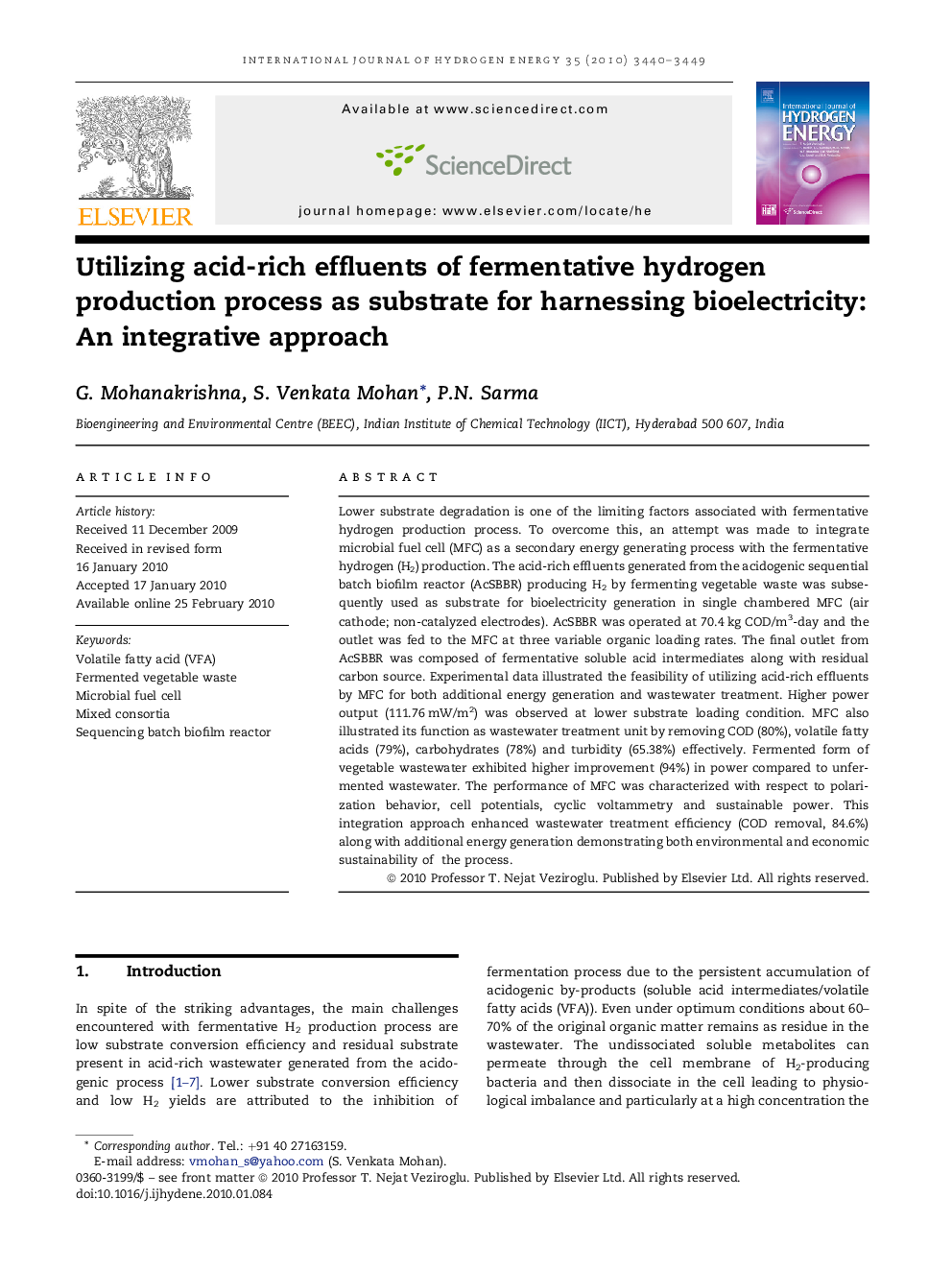| Article ID | Journal | Published Year | Pages | File Type |
|---|---|---|---|---|
| 1282899 | International Journal of Hydrogen Energy | 2010 | 10 Pages |
Lower substrate degradation is one of the limiting factors associated with fermentative hydrogen production process. To overcome this, an attempt was made to integrate microbial fuel cell (MFC) as a secondary energy generating process with the fermentative hydrogen (H2) production. The acid-rich effluents generated from the acidogenic sequential batch biofilm reactor (AcSBBR) producing H2 by fermenting vegetable waste was subsequently used as substrate for bioelectricity generation in single chambered MFC (air cathode; non-catalyzed electrodes). AcSBBR was operated at 70.4 kg COD/m3-day and the outlet was fed to the MFC at three variable organic loading rates. The final outlet from AcSBBR was composed of fermentative soluble acid intermediates along with residual carbon source. Experimental data illustrated the feasibility of utilizing acid-rich effluents by MFC for both additional energy generation and wastewater treatment. Higher power output (111.76 mW/m2) was observed at lower substrate loading condition. MFC also illustrated its function as wastewater treatment unit by removing COD (80%), volatile fatty acids (79%), carbohydrates (78%) and turbidity (65.38%) effectively. Fermented form of vegetable wastewater exhibited higher improvement (94%) in power compared to unfermented wastewater. The performance of MFC was characterized with respect to polarization behavior, cell potentials, cyclic voltammetry and sustainable power. This integration approach enhanced wastewater treatment efficiency (COD removal, 84.6%) along with additional energy generation demonstrating both environmental and economic sustainability of the process.
